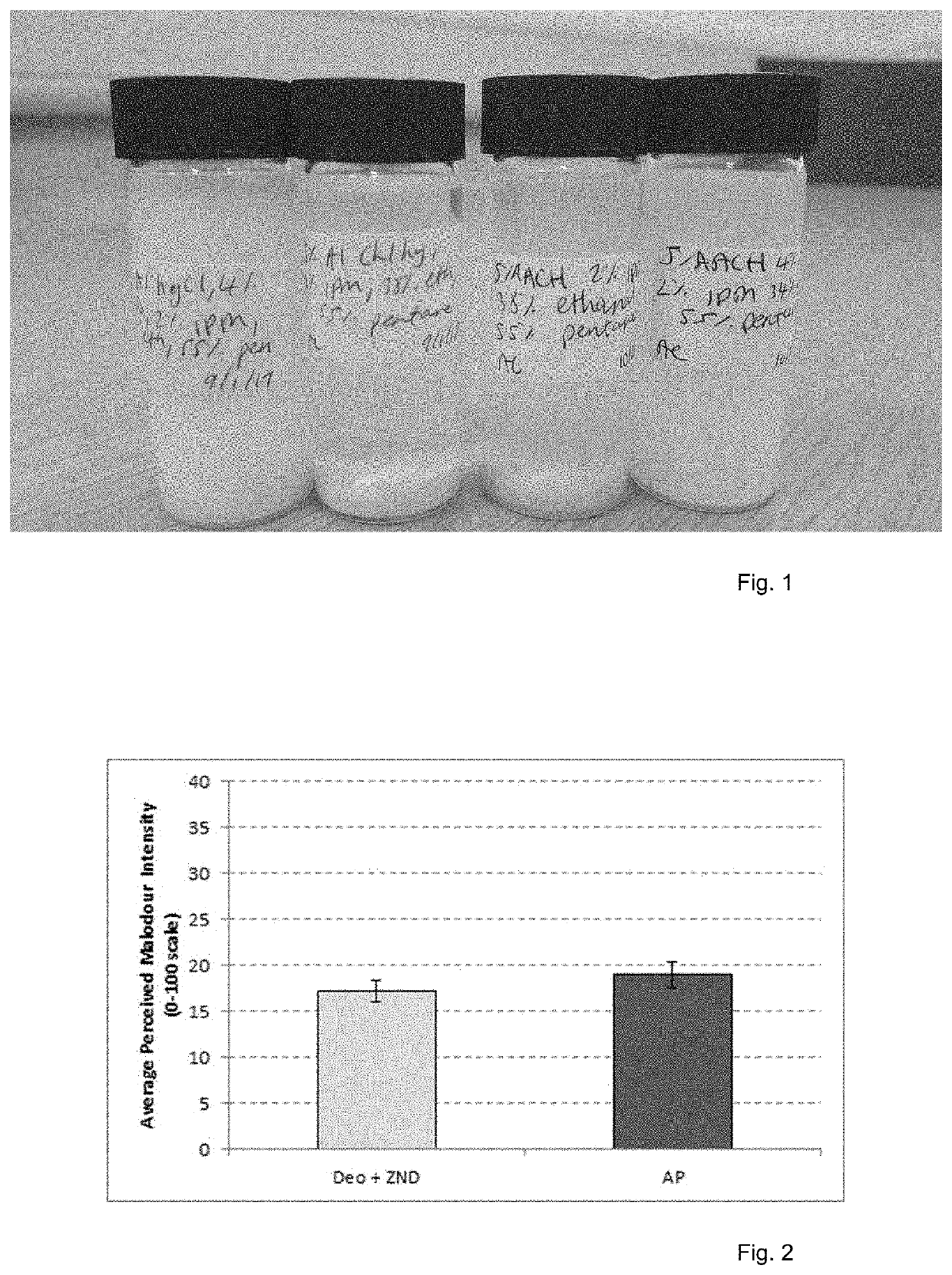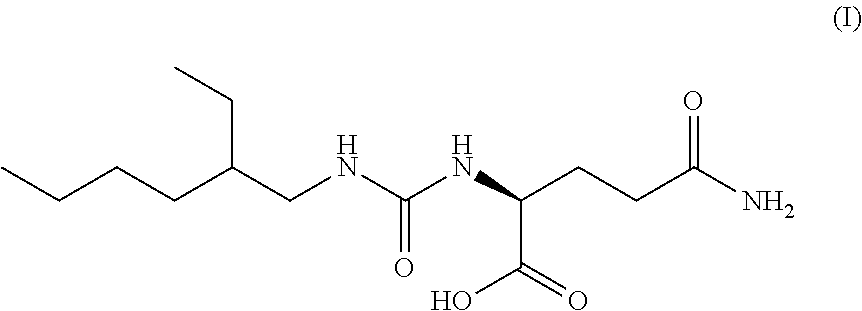Deodorant Comprising a Zinc Carboxylate Salt and Aluminum Chlorohydrate
- Summary
- Abstract
- Description
- Claims
- Application Information
AI Technical Summary
Benefits of technology
Problems solved by technology
Method used
Image
Examples
example 1
oholic Aerosol Formulations with Aluminium Chlorohydrate
[0112]The following model aerosol formulations were prepared in clear glass vials:
Sample 1Sample 2Sample 3Sample 4‘standard’ aluminium5%5%chlorohydrate‘activated’ aluminium——5%5%chlorohydratezinc neodecanoate4%——4%isopropyl myristate2%ethanol34% 38% 38% 34% pentane*55% *Pentane was used to represent the propellant, and is much easier to handle and store the resulting formulation than the propellants typically used in aerosols.
[0113]The glass vials were left at ambient temperature for at least 1 day, then shaken by hand prior to visual inspection. The results are shown in FIG. 1 (samples 1 through 4 being aligned from left to right). As is clearly visible, the aluminium chlorohydrate is only suspended in the samples containing zinc neodecanoate.
example 2
Malodour Performance
[0114]Aerosols were prepared using the following test formulations:[0115]1% fragrance, 4% zinc neodecanoate, 2% Dowanol TPM, 1% Eutanol G, 32% ethanol, 60% propellant[0116]1% fragrance, 10% aluminium chlorohydrate, 0.8% disteardimonium hectorite, 12% cyclomethicone, 76.2% propellant[0117](propellant=isobutane / propane mix)
[0118]5 days prior to testing, male subjects substituted their normal body wash with an unperfumed product (Sanex 0% Bodywash) and were asked to only use a deodorant supplied (Lynx Attract for Him). On the moming before the test, the male subjects were asked to shower using an unperfumed shower gel provided and not use any antiperspirant product or apply any other fragranced products.
[0119]Subjects reported to a panel suite in the morning in two groups for test product application.
[0120]The administrator applied 1.0 g of each product to each subject's axilla. Each subject wore both of the test formulations (one on each axilla region). The manner ...
example 3
ion of Neodecanoic Acid by Pressure Hydrogenation and Distillation
[0125]An autoclave vessel (Premex 120 mL) was charged with neodecanoic acid (70.0 g; Umecore) and Rhodium on alumina (1.0 g; Fluka puriss) and was then pressurized with 100 bar hydrogen. The mixture was stirred at 150° C. for 32 h.
[0126]After pressure release and venting, the mixture was diluted with MTBE (100 mL) and filtered by suction. The filtrate was concentrated in a rotary evaporator under reduced pressure to yield 56.0 g (80% yield) of a colourless liquid, of which 54.6 g were distilled over a 15 cm Vigreux column at 80-85° C. (p=0.12 mbar, bath temperature 128° C.).
[0127]Of the 8 collected fractions, No 3-7 were olfactorily pure and combined to yield 32.3 g (46%) of a clear colourless oil. The material still had an intrinsic odour of its own, but lacked the sulfury / rubbery / phenolic off-notes unpurified neodecanoic acid typically has.
PUM
| Property | Measurement | Unit |
|---|---|---|
| temperature | aaaaa | aaaaa |
| vapour pressure | aaaaa | aaaaa |
| temperatures | aaaaa | aaaaa |
Abstract
Description
Claims
Application Information
 Login to View More
Login to View More - R&D
- Intellectual Property
- Life Sciences
- Materials
- Tech Scout
- Unparalleled Data Quality
- Higher Quality Content
- 60% Fewer Hallucinations
Browse by: Latest US Patents, China's latest patents, Technical Efficacy Thesaurus, Application Domain, Technology Topic, Popular Technical Reports.
© 2025 PatSnap. All rights reserved.Legal|Privacy policy|Modern Slavery Act Transparency Statement|Sitemap|About US| Contact US: help@patsnap.com


